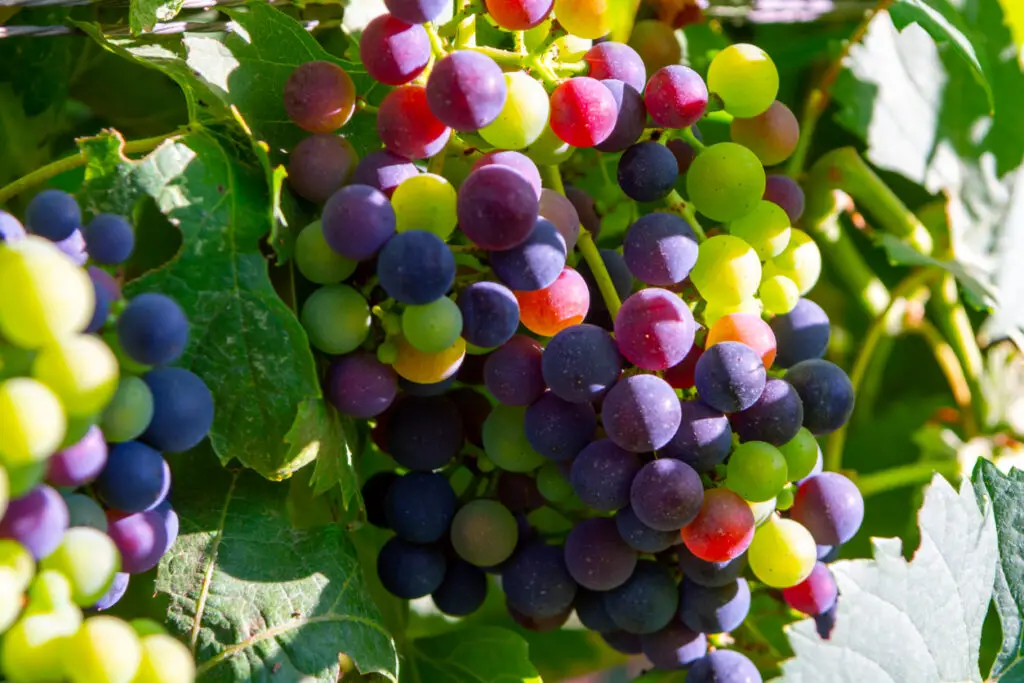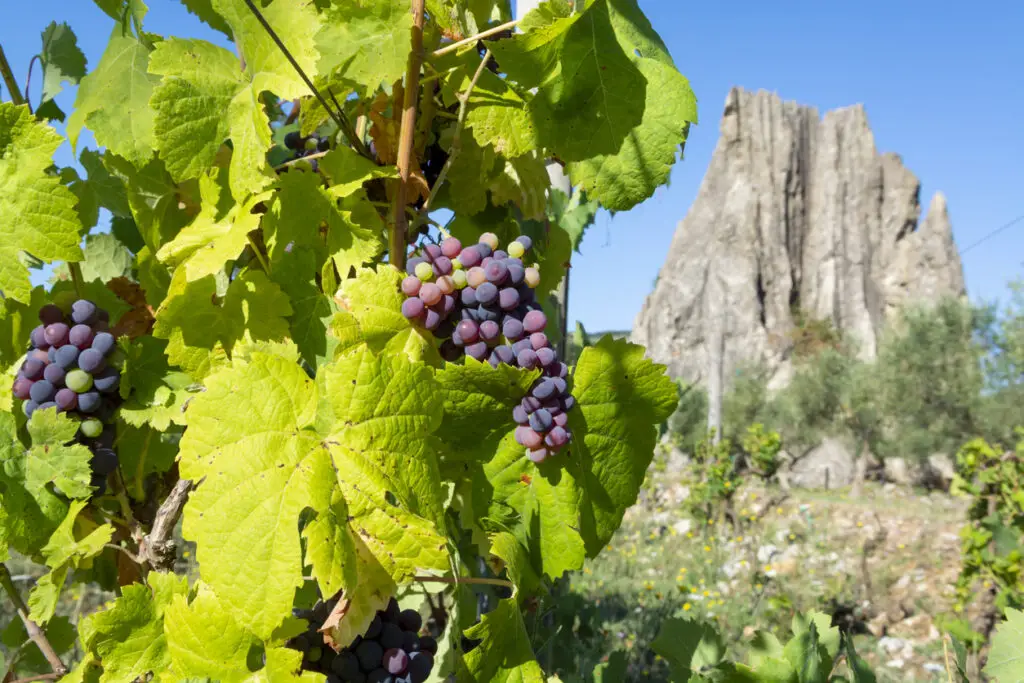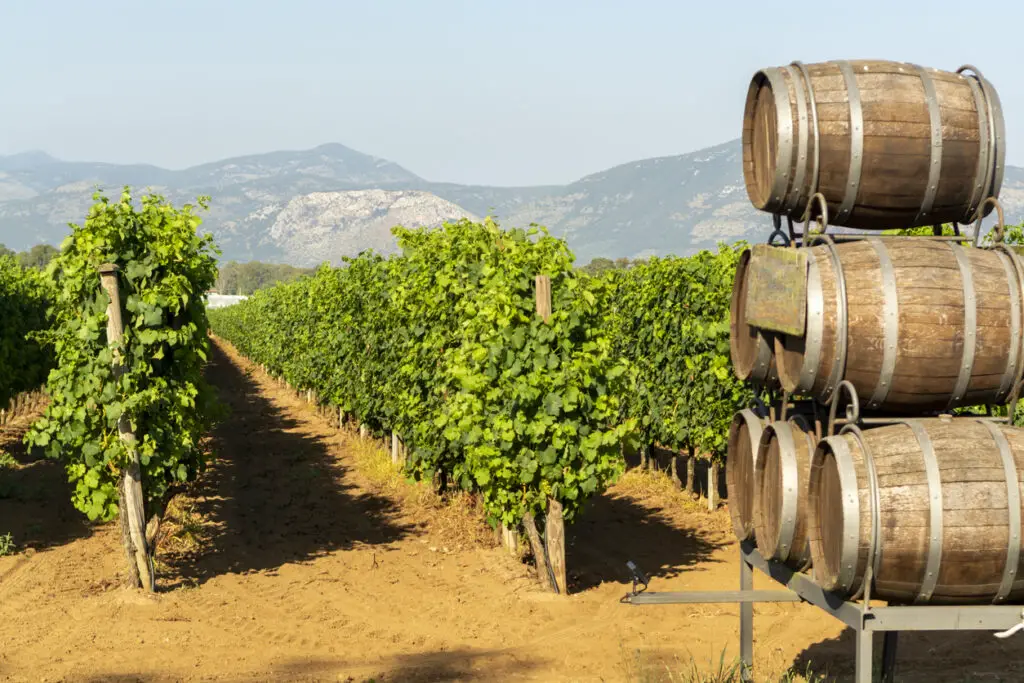You’ve been drinking cabernets, syrahs, and merlots for ages, and you’ve decided it’s time to branch out. Why not try a petit verdot? So you decide to buy a few good vintages your friends recommend, and you promptly store them in your wine cellar. But how long should you wait before enjoying them? Does petit verdot age well?
The answer is yes, petit verdots age quite well. Much like other heavy extraction wines (like cabernets and syrahs/shiraz), petit verdot has a robust tannin structure that allows it to age and develop for many years. We think most petit verdots should be aged at least 5 years and can be left much longer (think 15-20 years).
But what else is there to know about petit verdots? How should you be aging them, and what kind of foods pair best with petit verdots? We’ll cover all of that and more in this article!
Let’s dive in.
Why Does Petit Verdot Age Well?
Now that you know that petit verdot ages well, you’re probably wondering why? Well, there are several factors that play into why petit verdot ages well. In order to understand, we’ll need to examine both the properties of the grape and the fermentation process.
Author Note: Petit verdot grows best in regions with long growing conditions, such as California, Argentina, and Australia. These warmer regions allow the petit verdot grapes to fully develop and grow to their full potential.
The petit verdot grape has thick purple skin and relatively high sugar and acidity levels. The thick skin is what gives the wine strong tannins and is also why petit verdot is often used as a blending grape in French wines. The skin is also what gives petit verdot a deep purple color with relative opaqueness.
Tannins are the main component in wine that allows it to age well, and since petit verdot has heavy tannins it falls into the full-bodied long-aging wines.
What Does Petit Verdot Taste Like?

Now that we know that petit verdot ages quite well, let’s quickly go over what its flavor profile is. Petit verdot’s hallmarks are deep cooked fruit nose followed by robust leather and earthy notes. It’s not uncommon to taste plum, black cherry, as well as other herbal notes – such as violet, lavender, and sage.
Petit verdot is often heavily oaked which imparts flavors of vanilla, chocolate, and hazelnut. Because petit verdot has those heavy tannins, the mouthfeel is often robust with a gripping sensation at the end of the taste.
As we mentioned earlier, the petit verdot grape is often used in French wines as a mixing grape to give their Bordeaux blends more structure. More recently, however, 100% petit verdots have gained in popularity. The 100% petit verdots are where you’ll find the above flavor profile.
Where Does Petit Verdot Come From?
Petit verdot is actually one of the oldest known wine grape varietals. There are theories that petit verdot was first propagated in Basilica in the 16th and 17th centuries. There are also theories that petit verdot was actually cultivated in the middles ages in the warmer regions in France.
Author Note: Since the grape flourishes in warmer climates with long growing seasons, this latter theory tends to be the predominant theory. Either way, this makes petit verdot one of the oldest known wine grape varietals!
How Should You Age Petit Verdot?
We also thought it prudent to quickly go over the best ways to age petit verdot. Now that you know it can last many years (and get better over many years), you’ll probably want to age your recently bought petit verdot.
Tips for Aging Petit Verdot

There are several basic tenants to aging wine well. These hold especially true for varietals (like petit verdot) you plan on aging for many years. Let’s go over them.
Temperature
- Store your petit verdot at the proper aging temperature. What is the proper temperature? Between 50 and 59 degrees, Fahrenheit is perfect. How do you keep this temperature constant? We recommend getting a wine cooler to store your wine.
- Another option if you want to save the money and have a basement is to store your wine in the crawlspace. You should make sure ahead of time that the ambient temperature doesn’t fluctuate much from ~55 degrees Fahrenheit. The times you have to be most cautious are in the summer (when it can get too hot) and in the winter (when it can get too cold).
Darkness
- The next rule you need to follow for properly aging your petit verdot is to keep where ever you are storing it dark. UV rays from the sun are awful for wine over time. The UV rays will break down the wine’s structure and make the wine taste flat and bad.
- You can make sure your petit verdot stays dark relatively easily by storing it in a covered wine cooler and keeping the cooler somewhere dark. Or if you have a dedicated room in your crawl space or house, this will obviously also do the job. Just make sure there are no windows!
High Humidity
- Another important factor you need to consider when aging your petit verdot is to age it someplace that has relatively high humidity. High humidity prevents the corks in the bottles of petit verdot from becoming dehydrated and potentially failing.
- If a cork fails the seal on the wine will break and the wine will quickly become spoiled. Most crawlspaces stay relatively humid as they are exposed to the ground (which has water in it).
- You can also get wine coolers that have a humidifier built into them to keep your petit verdot at the correct humidity.
Low Movement
- Along with keeping your petit verdots bottles in a humid, dark environment, you also want to prevent them from being moved frequently or at all.
- Moving your bottles of petit verdot will break up the delicate chemical reactions and development of the wine, which will hinder the aging process.
- We recommend leaving your wine alone until you’re ready to drink it. No need to pick it up and check on it frequently!
Bottle Orientation
- Along the same lines as preventing your petit verdot from being moved frequently, there is also a proper way for the bottles to be oriented while aging. Wine should be stored horizontally.
- The reason why you want to store your petit verdot horizontally is that it keeps the cork hydrated which helps prevent the cork from drying out and potentially failing. This shouldn’t be an issue, however, as almost all wine coolers orient their bottles on their sides.
Don’t Skimp on Your Equipment
- Lastly, we wanted to highlight a mistake we see many wine enthusiasts fall into when they first start collecting wines. Do not go cheap on your wine storage setup! We see amateurs buy expensive bottles of wine and then store them in their closet – which doesn’t have proper storing settings at all!
- If you’re going to invest serious time and money on your wines, invest serious time and money on where you store them. Trust us, it’s worth it!
What Pairs Well with Petit Verdot?

As you probably know by now, one of the most fun parts of enjoying fine wine is learning what kinds of food it pairs well with. The way each wine flavor profile changes depending on what you’re eating is fascinating (at least we think so). So what food pairs well with petit verdot?
Glad you asked! Since petit verdot is a powerful wine with heavy tannins, it pairs best with decadent and powerful tasting foods. Here are some great choices of food to pair with your petit verdot.
- Grilled steak or Surf and Turf.
- Roast.
- Duck.
- Cheeseburger.
- Sharp cheddar.
- Smoked meats.
- Turkey (it’s a great wine for Thanksgiving!)
Author Note: And that is just the start. Most strong-flavored fatty foods will taste great with petit verdot. This is because the heavy tannins will balance out the lusciousness of fatty foods, while the acidity of the petit verdot will cut into heavy flavors.
This doesn’t mean you can’t enjoy drinking a petit verdot on its own, however. We’re perfectly fine with opening a petit verdot up before dinner, especially in the winter time when a heavier wine in front of the fireplace feels right.
Parting Thoughts
Petit verdot is not only one of the oldest wine varietals, but it’s also one of our favorites. We find its heavy flavors and robust mouthfeel addicting and super enjoyable. This is partly because we love strong wines, but also because it pairs well with some of our favorite foods (steak anyone?).
But we also enjoy petit verdot for its intricacies and its heritage. As we mentioned earlier, it’s one of the oldest known varietals. The Romans were drinking petit verdot along with many other ancient civilizations. Remember this the next time you open a bottle!
We hope you found this article on why petit verdot ages well informative and useful. You now know exactly why petit verdot ages well, along with the best ways to store your recently purchased petit verdot.
If you have any specific producers of petit verdot you would like to share with us or your own favorite dishes to eat with petit verdot, feel free to comment below.
To living a full-bodied life,
Wesley

